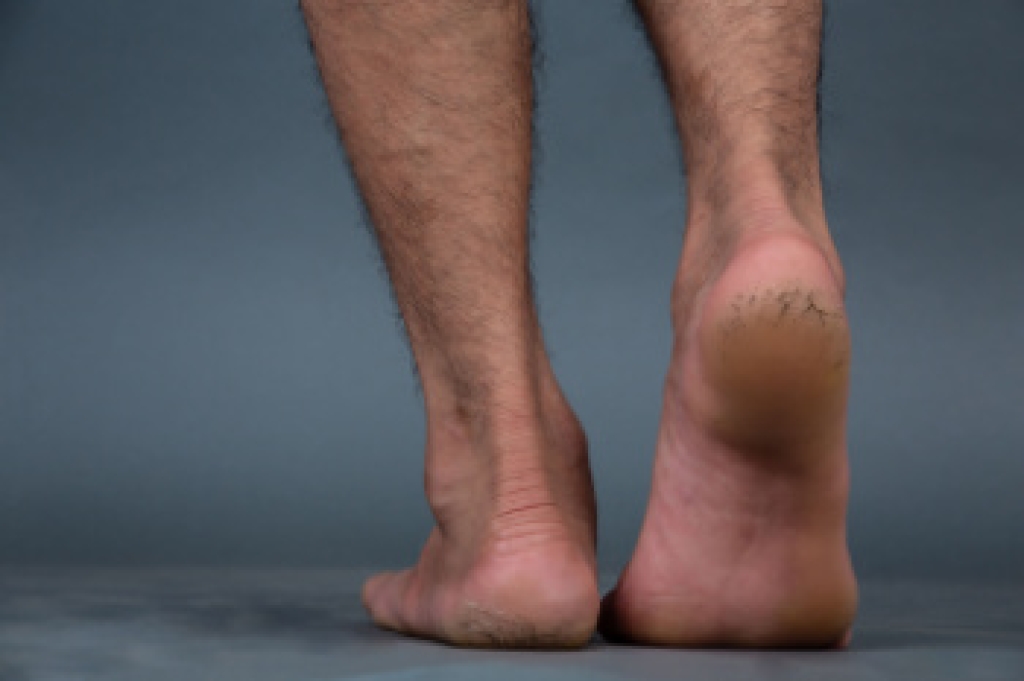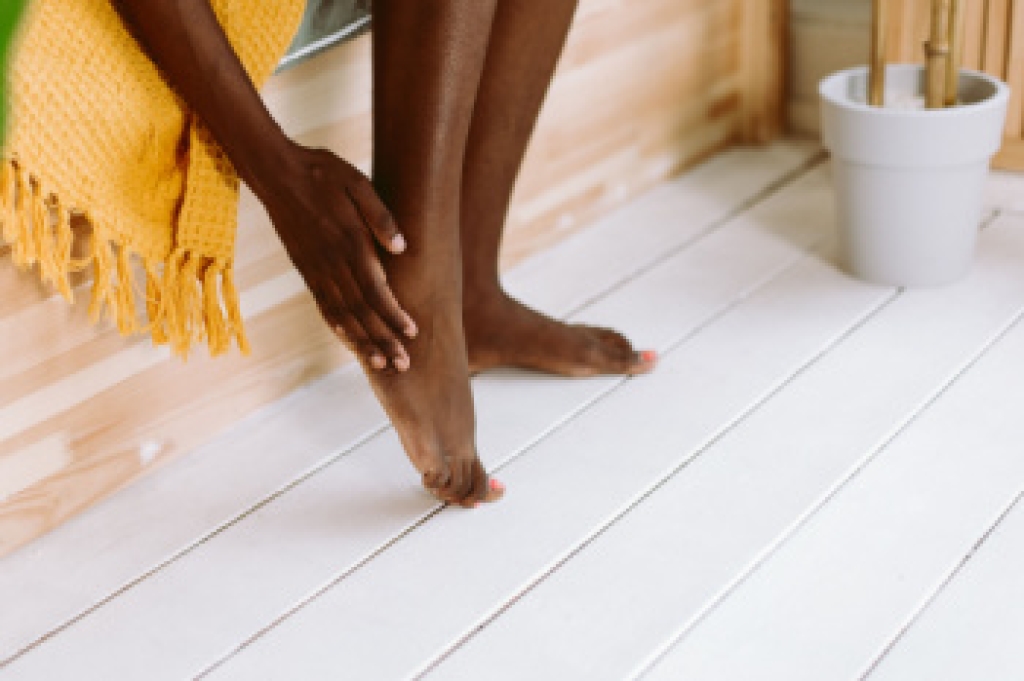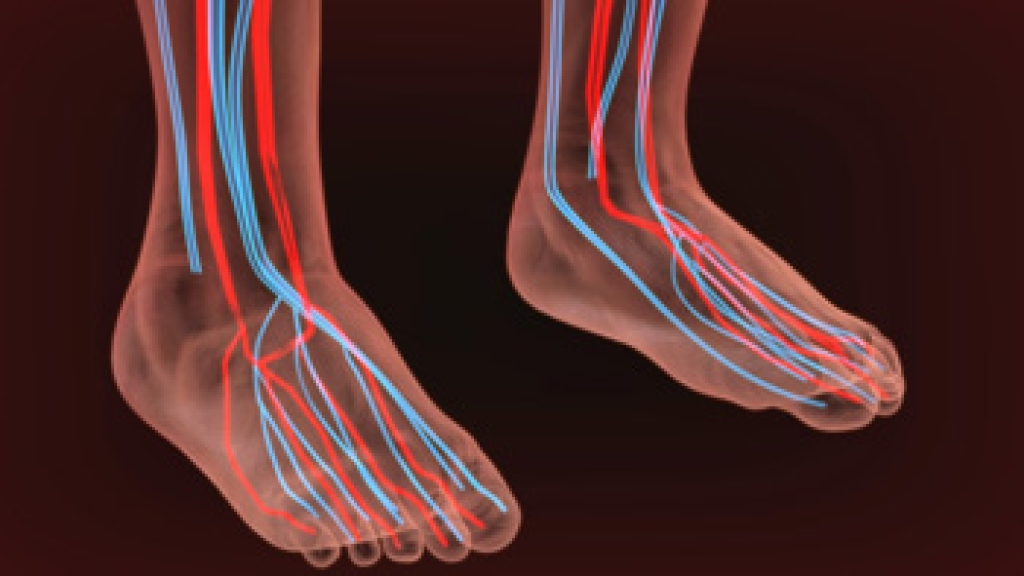Connect With Us
Blog
Blog
Cracked Heels and Their Causes

Cracked heels occur when the skin on the heels becomes dry, thickened, and splits. These cracks can cause discomfort and lead to infections if left untreated. The primary causes of cracked heels include dry skin, which reduces skin elasticity, and excessive pressure from standing or walking for long periods. Poor footwear choices, such as shoes that do not provide adequate support, can worsen the condition. Certain medical conditions like diabetes and eczema can also contribute to cracked heels, as they affect the skin’s ability to retain moisture. Obesity adds extra pressure on the feet, increasing the risk of cracks or fissures. Additionally, hydration is essential for maintaining skin health, and drinking sufficient water helps prevent the skin from drying out and cracking. Cracked heels can be painful and make it difficult to complete daily activities. If you have developed this condition, it is suggested that you consult a podiatrist who can successfully treat this ailment, which may include prescribed medication.
Cracked heels are unsightly and can cause further damage to your shoes and feet. If you have any concerns, contact Chuc Dang, DPM from California . Our doctor can provide the care you need to keep you pain-free and on your feet.
Cracked Heels
Cracked heels appear unappealing and can make it harder for you walk around in sandals. Aside from looking unpleasant, cracked heels can also tear stockings, socks, and wear out your shoes. There are several methods to help restore a cracked heel and prevent further damage.
How Do You Get Them?
Dry skin is the number one culprit in creating cracked heels. Many athletes, walkers, joggers, and even swimmers suffer from cracked heels. Age and skin oil production play a role to getting cracked heels as well.
Promote Healing
Over the counter medicines can help, especially for those that need instant relief or who suffer from chronic dry feet.
Wear Socks – Wearing socks with medicated creams helps lock in moisture.
Moisturizers – Applying both day and night will help alleviate dryness which causes cracking.
Pumice Stones – These exfoliate and remove dead skin, which allows for smoother moisturizer application and better absorption into the skin.
Change in Diet
Eating healthy with a well-balanced diet will give the skin a fresh and radiant look. Your body responds to the kinds of food you ingest. Omega-3 fatty acids and zinc supplements can also revitalize skin tissue.
Most importantly, seek professional help if unsure how to proceed in treating cracked heels. A podiatrist will help you with any questions or information needed.
If you have any questions, please feel free to contact our office located in Westminster, CA . We offer the newest diagnostic and treatment technologies for all your foot care needs.
Causes of Foot Pain

Foot pain can stem from a variety of causes, including plantar fasciitis, Morton’s neuroma, and metatarsalgia. Plantar fasciitis is often characterized by sharp pain in the heel, especially with the first steps in the morning. It is caused by inflammation of the tissue that connects your heel to your toes. Morton’s neuroma, on the other hand, involves a thickening of tissue around a nerve between the toes, causing burning or tingling sensations, or even a feeling like there’s a pebble in your shoe. Metatarsalgia refers to pain in the ball of the foot, often described as a bruising or aching sensation, which can worsen with activity. Treatments include rest, stretching exercises, custom orthotics, and in some cases, anti-inflammatory medications or corticosteroid injections. A podiatrist can offer a comprehensive diagnosis and recommend targeted treatments to alleviate pain. If you are struggling with foot discomfort, it is suggested that you make an appointment with a podiatrist.
Foot Pain
Foot pain can be extremely painful and debilitating. If you have a foot pain, consult with Chuc Dang, DPM from California . Our doctor will assess your condition and provide you with quality foot and ankle treatment.
Causes
Foot pain is a very broad condition that could be caused by one or more ailments. The most common include:
- Bunions
- Hammertoes
- Plantar Fasciitis
- Bone Spurs
- Corns
- Tarsal Tunnel Syndrome
- Ingrown Toenails
- Arthritis (such as Gout, Rheumatoid, and Osteoarthritis)
- Flat Feet
- Injury (from stress fractures, broken toe, foot, ankle, Achilles tendon ruptures, and sprains)
- And more
Diagnosis
To figure out the cause of foot pain, podiatrists utilize several different methods. This can range from simple visual inspections and sensation tests to X-rays and MRI scans. Prior medical history, family medical history, and any recent physical traumatic events will all be taken into consideration for a proper diagnosis.
Treatment
Treatment depends upon the cause of the foot pain. Whether it is resting, staying off the foot, or having surgery; podiatrists have a number of treatment options available for foot pain.
If you have any questions, please feel free to contact our office located in Westminster, CA . We offer the newest diagnostic and treatment technologies for all your foot care needs.
Understanding Recurrent Ankle Sprains

Recurrent ankle sprains occur when the ankle repeatedly rolls or twists, causing damage to ligaments that stabilize the joint. These repeated injuries weaken the ankle over time, leading to chronic instability, swelling, and pain. Common causes include inadequate healing from previous sprains, weakened muscles, or structural issues like high arches or loose ligaments. Each sprain increases the risk of further injury, as the ligaments become less effective at supporting the joint. Persistent instability can interfere with daily activities and increase the likelihood of arthritis in the ankle. Treatment focuses on strengthening the ankle through targeted exercises, including balance exercises, and wearing supportive braces. Custom orthotics may also improve alignment and reduce stress on the joint. In severe cases, surgical intervention may be necessary. If you are experiencing recurrent ankle sprains, it is suggested that you consult a podiatrist to prevent long-term damage and restore stability.
Although ankle sprains are common, they aren’t always minor injuries. If you need your ankle injury looked at, contact Chuc Dang, DPM from California . Our doctor can provide the care you need to keep you pain-free and on your feet.
How Does an Ankle Sprain Occur?
Ankle sprains are the result of a tear in the ligaments within the ankle. These injuries may happen when you make a rapid shifting movement while your foot is planted. A less common way to sprain your ankle is when your ankle rolls inward while your foot turns outward.
What Are the Symptoms?
- Pain at the sight of the tear
- Bruising/Swelling
- Ankle area is tender to touch
- In severe cases, may hear/feel something tear
- Skin discoloration
Preventing a Sprain
- Wearing appropriate shoes for the occasion
- Stretching before exercises and sports
- Knowing your limits
Treatment of a Sprain
In many cases, the RICE method (Rest, Ice, Compression, and Elevate) is used to treat ankle sprains. However, you should see a podiatrist to see which treatment option would work best with your injury. In severe cases, surgery may be required.
It is important to ask your doctor about rehab options after you receive treatment for your injury. Stretching, strength training, and balance exercises may help the ankle heal while also preventing further injury.
If you have any questions, please feel free to contact our office located in Westminster, CA . We offer the newest diagnostic and treatment technologies for all your foot care needs.
Various Causes of Poor Foot Circulation

Poor foot circulation can result from several underlying health conditions. Atherosclerosis, the buildup of plaque in the arteries, is one of the primary causes, as it restricts blood flow to the feet and other extremities. Peripheral artery disease, or PAD, often a result of atherosclerosis, further narrows the arteries, leading to reduced circulation and causing pain, cramping, and numbness. Diabetes also contributes to poor circulation, as high blood sugar levels can damage blood vessels and nerves, impairing the flow of blood to the feet. Obesity, a sedentary lifestyle, and smoking all increase the risk of poor circulation by putting extra strain on the cardiovascular system. These factors can lead to complications such as slow-healing foot wounds, infections, and even tissue damage. If you have any of the above symptoms, it is suggested that you consult a podiatrist who can help you to manage this condition.
While poor circulation itself isn’t a condition; it is a symptom of another underlying health condition you may have. If you have any concerns with poor circulation in your feet contact Chuc Dang, DPM of California . Our doctor will treat your foot and ankle needs.
Poor Circulation in the Feet
Peripheral artery disease (PAD) can potentially lead to poor circulation in the lower extremities. PAD is a condition that causes the blood vessels and arteries to narrow. In a linked condition called atherosclerosis, the arteries stiffen up due to a buildup of plaque in the arteries and blood vessels. These two conditions can cause a decrease in the amount of blood that flows to your extremities, therefore resulting in pain.
Symptoms
Some of the most common symptoms of poor circulation are:
- Numbness
- Tingling
- Throbbing or stinging pain in limbs
- Pain
- Muscle Cramps
Treatment for poor circulation often depends on the underlying condition that causes it. Methods for treatment may include insulin for diabetes, special exercise programs, surgery for varicose veins, or compression socks for swollen legs.
As always, see a podiatrist as he or she will assist in finding a regimen that suits you. A podiatrist can also prescribe you any needed medication.
If you have any questions, please feel free to contact our office located in Westminster, CA . We offer the newest diagnostic and treatment technologies for all your foot care needs.
Blog Archives
- 2025
- 2024
- 2023
- 2022
- 2021
- 2020
